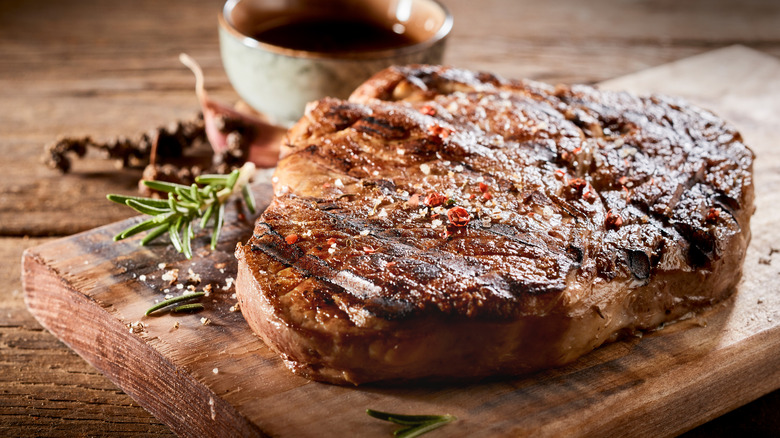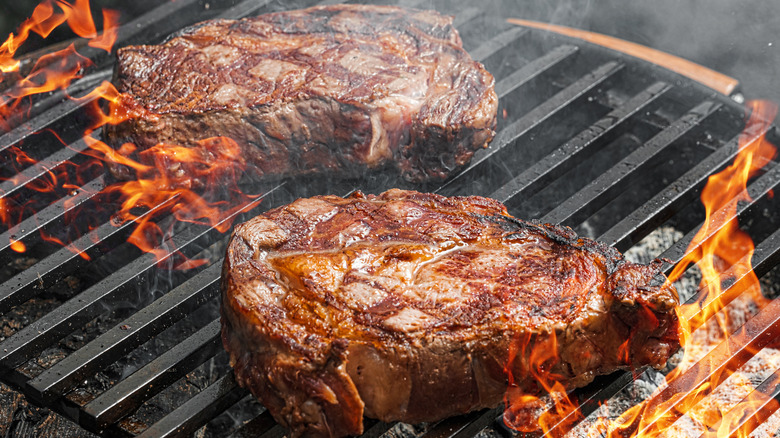Why Thicker Steaks Require Lower Heat
If you're a steak lover then you probably have a few opinions on what makes a great steak. You probably have your favorite steakhouse, your favorite cut, and maybe a favorite red wine that pairs perfectly with your meal. At home, you might have your preferred grilling method down pat, or maybe you like to sear your steak on the stove and then put it in the oven to finish. Or maybe you're still learning how to prepare steak at home. If that's the case, then never fear, you're in the right place.
The saying goes that good pizza is good, and bad pizza is still pretty good, but when it comes to steak, there's really no gray area. You can either cook the meat perfectly, or you can run into the same mistakes that everyone else makes with steak. If you prefer your steak to be cooked medium rare, then overcooking it is a real bummer, especially if you dropped some serious coin on it. Conversely, if you prefer a medium or well-done steak, having a steak that is too rare can be frustrating, especially if you've cut into it already. So how do you nail it?
Thicker steaks require more TLC
Whether you're grilling your steak or cooking it in a pan, proper heat is the key to cooking your steak perfectly, and it's actually the thickness of your meat that dictates what level of heat you should use. With a thinner steak, it's okay to hit it with high heat for a short amount of time to sear the outside (per Avant-Garde Kitchen), but when it comes to thicker steaks, the rules change a bit. According to Insider, thicker steaks should be cooked on lower heat to ensure they're properly cooked in the middle. If a thick steak cooks on too high a heat, it'll burn by the time the interior is cooked through.
But what about the all-important crust? For thicker steaks, All Recipes recommends a technique called the reverse sear. Instead of starting with a dramatic sizzle, place the steak on a grill or pan over low heat, about 250 degrees F. Keep the cooking surface at that low temperature for about 25 minutes, until the steak reaches an internal temperature of 100 degrees F. When the steak is at the correct internal temperature, crank up the heat all the way to get a nice sear on it. After you sear it, use the meat thermometer again and reference the temperature guide from Omaha Steaks to find your desired doneness. Finally, before you dig in, don't forget to let that steak rest for a few minutes so it stays juicy and tender (via Steak School).

